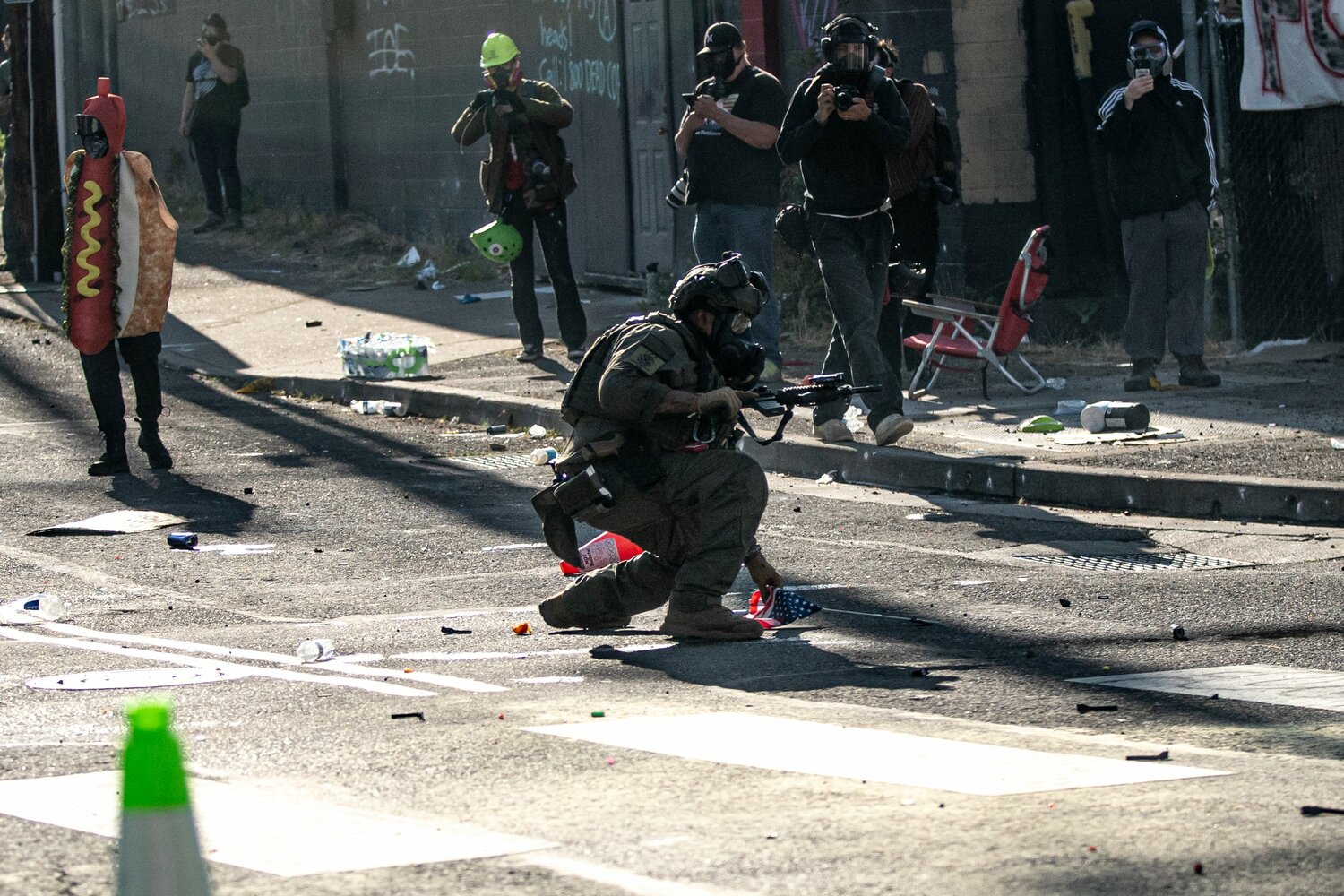PORTLAND, Ore. — A senior Portland Police Bureau official testified in court that federal officers were fueling clashes with protesters outside the U.S. Immigration and Customs Enforcement (ICE) building in South Portland. The statements underscore growing tensions between local and federal law enforcement during months of demonstrations against the Trump administration’s immigration policies.
Police Testimony Raises Concerns
Assistant Chief Craig Dobson, who oversees operations across Portland’s three precincts, said federal agents were “instigating” some of the ruckus at the ICE building. His comments came during sworn testimony in July, as part of a lawsuit filed by resident Cloud Elvengrail, who accused the city of failing to enforce noise ordinances during protests.
“It makes it extremely difficult for us to deal with, as the folks on the other side of this fence have been, night after night, actually instigating and causing some of the ruckus,” Dobson said. When pressed by Elvengrail’s attorney, he clarified: “I’m saying that they’re not following best practice.”
Also Read
The bureau has declined further comment beyond the official record, while the Department of Homeland Security (DHS) has not responded to requests for clarification.
Protests Sparked by Immigration Crackdown
The demonstrations began in early June in response to the Trump administration’s crackdown on immigration. They reached a peak that month, with hundreds of protesters gathering nightly, and have continued with periodic flare-ups through September.
Federal officers have arrested more than two dozen people at the site. Alleged offenses have ranged from property damage to a woman accused of throwing a knife at agents. Still, city leaders say many protesters were peaceful when force was used against them.
Mayor Keith Wilson has called on DHS to investigate videos showing federal agents striking nonviolent demonstrators. “These actions raise serious questions about the conduct of federal officers in our city,” Wilson said.
Tensions Between Local and Federal Police
Dobson’s testimony reflects a longstanding friction between the Portland Police Bureau and federal authorities. State law prevents local police from assisting in immigration enforcement or working with agencies that violate Oregon’s crowd-control restrictions.
In practice, that has meant Portland police largely withdrew from directly managing protests after June, leaving federal agents to deal with nightly gatherings of dozens of demonstrators. The decision followed public backlash against local police after they made arrests and helped federal officers clear barricades earlier in the summer.
Reports of Excessive Force
Internal police summaries reveal frustration with federal tactics. Commander James Crooker described a June 12 protest where federal agents left the building unannounced and fired pepper balls into the crowd. “This independent action made it challenging for PPB to fully utilize the Elaborated Social Identity Model,” Crooker wrote, referring to a crowd-control strategy that emphasizes dialogue and selective enforcement.
He added that firing without warning “enraged” the crowd, which escalated into throwing objects at officers. Other reports documented federal officers using pepper balls indiscriminately, including one incident on June 23 where an officer fired into a crowd for unclear reasons.
On June 24, federal police requested an ambulance after a detained protester lost consciousness from being struck in the head by a gas canister. That same day, Chief Bob Day told city councilors that Portland police were stepping back from protest management.
Federal Response Questioned
Dobson’s testimony also detailed chaotic communication with federal partners. On June 14, the bureau received “frantic calls” from federal officers claiming their building had been barricaded, an officer was injured, and a fire had broken out. Portland police later determined the reports were exaggerated: the “head injury” amounted to abrasions, and no fire was found at the gate.
Such missteps complicated local police efforts to pursue lawful arrests. “Due to FPS rapid transition to crowd control munitions based on what appeared to be low-level crimes, it was challenging to carry this strategy out,” Commander Franz Schoening wrote.
Broader Context
The ICE facility itself has come under scrutiny. The City of Portland recently issued a violation notice, alleging the agency breached its conditional land use agreement by holding detainees longer than 12 hours and boarding up windows. The violation could lead to enforcement actions if ICE fails to comply. Meanwhile, the building is undergoing a $4.6 million fortification project.
For nearby residents, the nightly protests have been disruptive, with music, chanting, and confrontations dragging late into the night. While many blame demonstrators, police records show local officials increasingly point to federal tactics as a source of escalation.
Looking Ahead
Two people injured during the protests have filed intent to sue DHS, citing excessive use of force. With tensions between agencies unresolved, Portland leaders continue to press for accountability.
For now, federal officers remain the primary responders at the ICE building, while Portland police limit their involvement. As Dobson’s testimony revealed, the city views federal tactics not only as heavy-handed but also as counterproductive, further inflaming a volatile situation rather than calming it.












